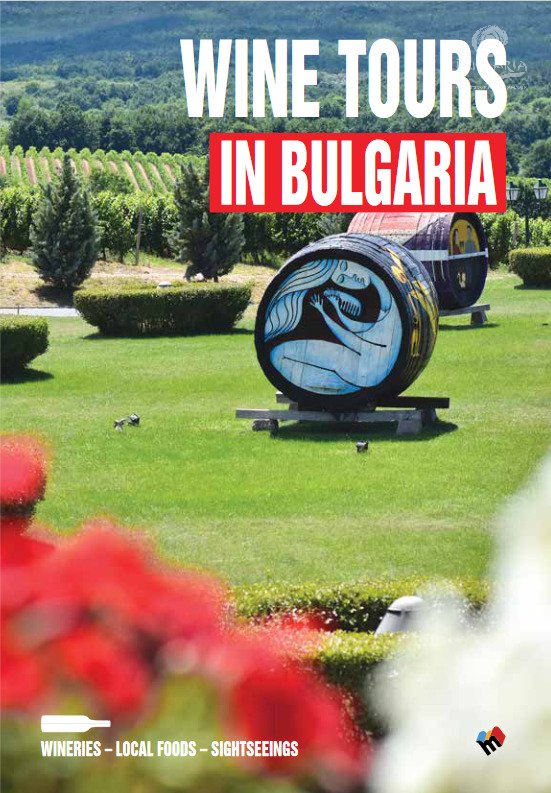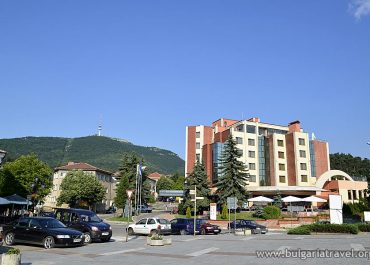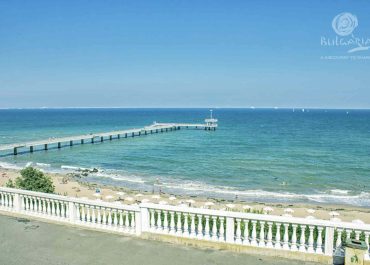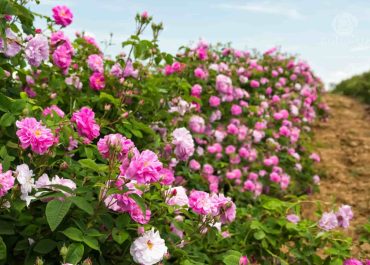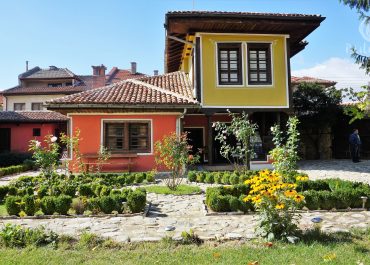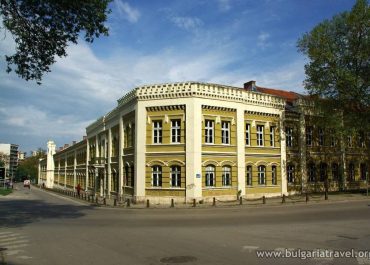
Wine and Cuisine
Wine production has over a thousand year long tradition in Bulgaria. The ancient Thracians, who populated the land in ancient times, worshipped the gods Zagreus and Dionysius and used the wine during their religious rituals. Nowadays Bulgaria is a proud producer of fine quality wines, some of which are made from unique sorts of vine, impressing wine connoisseurs worldwide.
Wine is an integral part of the history of Bulgaria, it is also very much a part of Bulgarian culture, customs and spirit. The Bulgarian lands are rooted in ancient civilizations which have left an indelible imprint on modern Bulgaria. The ancient Thracians used wine as an important part of their religious rituals and as a mean of communing with their gods. Evidence for this can be found in the many shrines discovered throughout the country, which bring to mind the ancient rituals and the cult of the god of wine, Zagreus. Bulgaria is home to some of the most important archaeological discoveries, including gold and silver Thracian pieces, most of which were parts of beautiful sets used for serving and consuming wine. The use of the Orphic drink in religious rituals is associated with traditions in viticulture and winemaking. Homer often mentions in his works the superior quality of Thracian wines.
Unique local grape varieties
Gamza is a local red wine variety, which is widespread in Northwestern Bulgaria – Suhindol, Vidin and Pleven. The grapes of this variety mature late and produce red dessert and table wines. These have a clear bright raspberry colour and a fruity, prevailingly raspberry aroma. They are fresh, light-bodied and should not be flavoured with oak. Gamza wines are usually consumed young. The variety is grown in Hungary, Romania and Macedonia. The other most common name of the variety is Kadarka. The best quality Gamza wines can be tasted in wineries in the region of Vidin (Bregovo), Pleven, Suhindol, Pavlikeni among others.
Dimyat is a Bulgarian white grape typica of the Black Sea Region used for the production of dry white and aromatic wines and distillates (rakia, brandy, etc.). Its flavour is mild with a pleasant freshness. It grows best in the region of Varna but is also grown in other parts of the country. You can taste it in the wineries in the region of Varna, Shumen, Burgas, Pomorie among others.
Mavrud is a very old local variety grown mainly in the foothills of the Rodope Mountains – Asenovgrad, Pazardzhik and Plovdiv. The wine produced from Mavrud is saturated ruby purple and has an excellent flavour. It has a pronounced rich texture and a luscious aroma with strong overtones of ripe wild berries and spices. It ages very well in oak barrels. Several wineries in the region of Asenovgrad, Pazardzhik and Plovdiv offer tasting of Mavrud of excellent quality.
Pamid is one of the oldest varieties grown in Bulgaria. It is widely found throughout the Balkan Peninsula under different names. It is suitable for wine production and fresh consumption. Wine produced from Pamid has a light red colour. Its aromas are fresh, with fruity notes, elegant body and soft finish. It is consumed young due to the low content of phenolics and does not respond well in contact with oak. It is often used in blends. Pamid can be sampled at wineries in the region of Pazardzhik, Pamidovo and Plovdiv.
Rubin is a local variety created by cross fertilization from two varieties – Nebbiolo and Syra. Its wines have a deep colour and a fullbodied flavour with a soft finish. Its aroma is intense, fruity, with a predominance of ripe blackberry. In contact with oak it develops a hint of fruit jam. Rubin wines can be tasted at wineries in the region of Plovdiv and Septemvri. The red wine from that variety has a good ageing potential both in bottles and oak barrels.
Shiroka Melnishka is a local red variety which grows only in the regions of Melnik, Petrich and Sandanski, since it is vulnerable to low temperatures. The colouring of the wine is medium deep. The wine produced from this grape variety is of excellent quality, with ripe cherry and herbal aromas, and in the presence of oak it develops undertones of tobacco and leather. The flavour of the young wine is fresh, with pronounced tannins. With maturity its taste becomes softer but retains its spicy finish. The unique flavour of the wine from grape variety Shiroka Melnishka can be experienced in the wineries in the region of Sandanski and Melnik.
Cherven Misket is an old Bulgarian variety, mostly cultivated in the Sub-Balkan region. It is the Bulgarian grape variety that is most highly resistant to cold. The wine made from it has an interesting pink tint. It has an oil-bearing rose, quince and honey aroma. White wines from Cherven Misket can be tasted in wineries in the region of Karlovo, Banya, Straldzha and Sungurlare. Except for dry white wines the variety is very suitable for dessert semi-dry and sweet wines and for the production of distillates (rakia, brandy, etc.) with a huge cultivation and aging potential. As a distillate, it shows good results when aging in oak, acacia and cherry barrels.
Almost all wineries in the country offer wine tasting and have areas specially equipped for this purpose. Both group and private events can be organized. For more information, contact your tour operator, the local tourist information centre or one of the many wineries. The region of Pleven, Kaylaka Park, hosts the only Wine Museum in the country. There you can learn about the history of Bulgarian winemaking and the subtleties of wine tasting. At the museum many different wines can be tasted. The museum houses around 7,000 exhibits – old wines and wine storage and winemaking vessels. The oldest wine in the museum was produced almost 100 years ago.
Bulgarian cuisine
The traditional Bulgarian cuisine is rich in spices, with specific and unique taste. Most Bulgarian meals are easy to prepare – if you follow a traditional recipe to prepare an authentic Bulgarian meal, you will feel the Bulgarian spirit and cosy atmosphere.
The spices, fruit and vegetables used are organic. Only in Bulgaria one can experience the taste of the world-famous Bulgarian yoghurt, as well as delicacy prepared with it. Bulgaria produces the rich flavoured white cheese and rich tasting herbal honey.
Bulgarian cuisine is colourful and diverse. It is rooted in centuries-old traditions and practices. In some places recipes have been passed down from generation to generation and have remained unchanged for hundreds of years. Characteristic of Bulgarian cuisine is the simultaneous heat treatment of most products. The recipes include a large number of vegetables and spices, among which are garlic, black pepper, thyme, spearmint, savory, bay leaf and paprika. Some dishes are prepared for specific Bulgarian holidays – Christmas Eve, Easter, St. George’s Day and St. Nicholas Day.
The most products for which Bulgaria is internationally known are yogurt and white brine (feta) cheese. These are almost always present on Bulgarian tables in one form or another.
One of the most famous and most popular breakfast items in the country is banitsa. It is a made of dough with various fillings, such as cheese, spinach, rice, and meat.
Other popular breakfasts dishes include pancakes, buhtas (fritters), mekitsas (fried dough pieces), and fried bread slices, also Kozunak. All of these are particularly delicious when served with jam, marmalade, honey or Bulgarian yogurt.
People in rural areas grow vegetables that are exceptionally tasty, which is why salads occupy a central place in our culinary tradition. The most popular Bulgarian salad is the Shopska Salad, but there are also other salads worth trying – Shepherd’s Salad, Harvest Salad, Snezhanka, Monk’s Salad, Dobrudzha Salad, Roasted Peppers Salad, and many others.
One of the most popular appetizers is Tarator (cold Cucumber Soup). It is prepared with yogurt, cucumbers, dill, crushed walnuts and spices.
Soups and broths are also popular in the countryside – particularly delicious bean soups are served in the region of the village Smilyan, in the Rhodope Mountain. Excellent fish soups are served in the regions of the Black Sea and the Danube River.
Some of the most popular Bulgarian dishes are grilled – meat balls, kebapches, grilled meat pieces, grilled sausages, and others. Various stews and dishes in clay pots are also a regular part of the Bulgaria cuisine (hotchpotch and casseroles). These include Chomlek, Kavarma, and Kapama (in the Bansko region).
Another favorite Bulgarian dish is prepared with stuffed cabbage or vine leaves – the leaves used may be either small or broad. The dish, which is prepared by wrapping the filling in the leaves, is very popular in the Thracian region.
One of the trademarks of the Bulgarian cuisine is Cheverme – an entire lamb roasted on a spit. This dish is typical for the Rhodope region, but it is also served throughout the country.
Potatoes are a main ingredient in many Bulgarian recipes. The most popular potato dishes include Ogreten (au gratin), Patatnik (in the Rhodope region), potato stew, and fried potatoes.
Bulgaria’s cuisine also consists of various cold cuts and other meat delicacies. Flat sausage is the most famous of thewse. It is prepared all over the country, but it has the longest tradition in the city of Gorna Oryahovitsa. Another popular delicacy is the Banski Starets (the “Bansko Old Man”). As the name suggests, it is served in Bansko. In Elena and the region known as the Elena Balkans, a specialty is the Elena Pork Leg, prepared with salted pork.
This brief introduction only touches on the diverse Bulgarian dishes and drinks. To fully know the culinary magic of the country, it is necessary to visit all of the regions where the traditional recipes are proudly maintained and culinary delights are constantly on offer.



